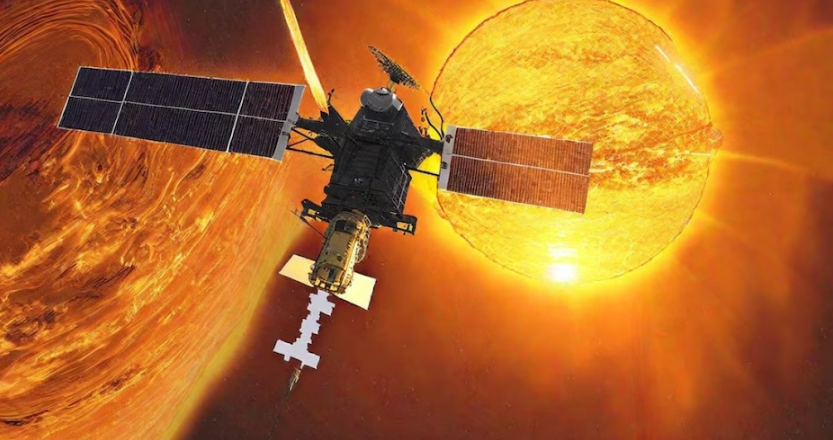Aditya Mission (GS Paper 3, Science and Technology)

Context
- Aditya L1 solar mission of the ISRO is continuously sending data about the Sun.
What is the Aditya-L1 mission?
- Aditya-L1 is the first space-based Indian observatory to study the Sun. It was launched on September 2, 2023 by the PSLV-C57.
- Solar observatory is placed at Lagrangian point L1 for “Observing and understanding the chromospheric and coronal dynamics of the Sun” in a continuous manner.
- Placing the Aditya-L1 in a halo orbit around L1 point has advantages as compared to placing in a Low Earth Orbit (LEO):
- It provides a smooth Sun-spacecraft velocity change throughout the orbit, appropriate for helioseismology.
- It is outside of the magnetosphere of Earth, thus suitable for the “in situ” sampling of the solar wind and particles.
- It allows unobstructed, continuous observation of the Sun, and view of earth for enabling continuous communication to ground stations.
- It is equipped with seven payloads (instruments) on board with four of them carrying out remote sensing of the Sun and three of them carrying in-situ observation.
What are the seven payloads?
- The Visible Emission Line Coronagraph (VELC) will study the Corona, imaging and spectroscopy, and Coronal mass ejections.
- The Solar Ultraviolet Imaging Telescope (SUIT) will focus upon the Photosphere and Chromosphere imaging- narrow and broadband. It will also measure the solar irradiance variations.
- The Solar Low Energy X-ray Spectrometer (SoLEXS) and High Energy L1 Orbiting X-ray Spectrometer (HEL1OS) will study the soft and hard X-ray flares from the Sun over a wide X-ray energy range.
- The Aditya Solar wind Particle Experiment (ASPEX) and Plasma Analyser Package For Aditya (PAPA) will analyze the electrons and protons in the Solar wind or particles. It will also study the energetic ions.
- The Advanced Tri-axial High Resolution Digital Magnetometers will study the interplanetary magnetic field at L1 point.
What is a Lagrange Point?
- Lagrange points are positions in space where objects sent there tend to stay put. At Lagrange points, the gravitational pull of two large masses precisely equals the centripetal force required for a small object to move with them.
- There are five Lagrange points, three are unstable and two are stable. The unstable Lagrange points are labeled L1, L2 and L3. The stable Lagrange points are labeled L4 and L5.
- The L1 point of the Earth-Sun system affords an uninterrupted view of the sun and is currently home to the Solar and Heliospheric Observatory Satellite SOHO.


